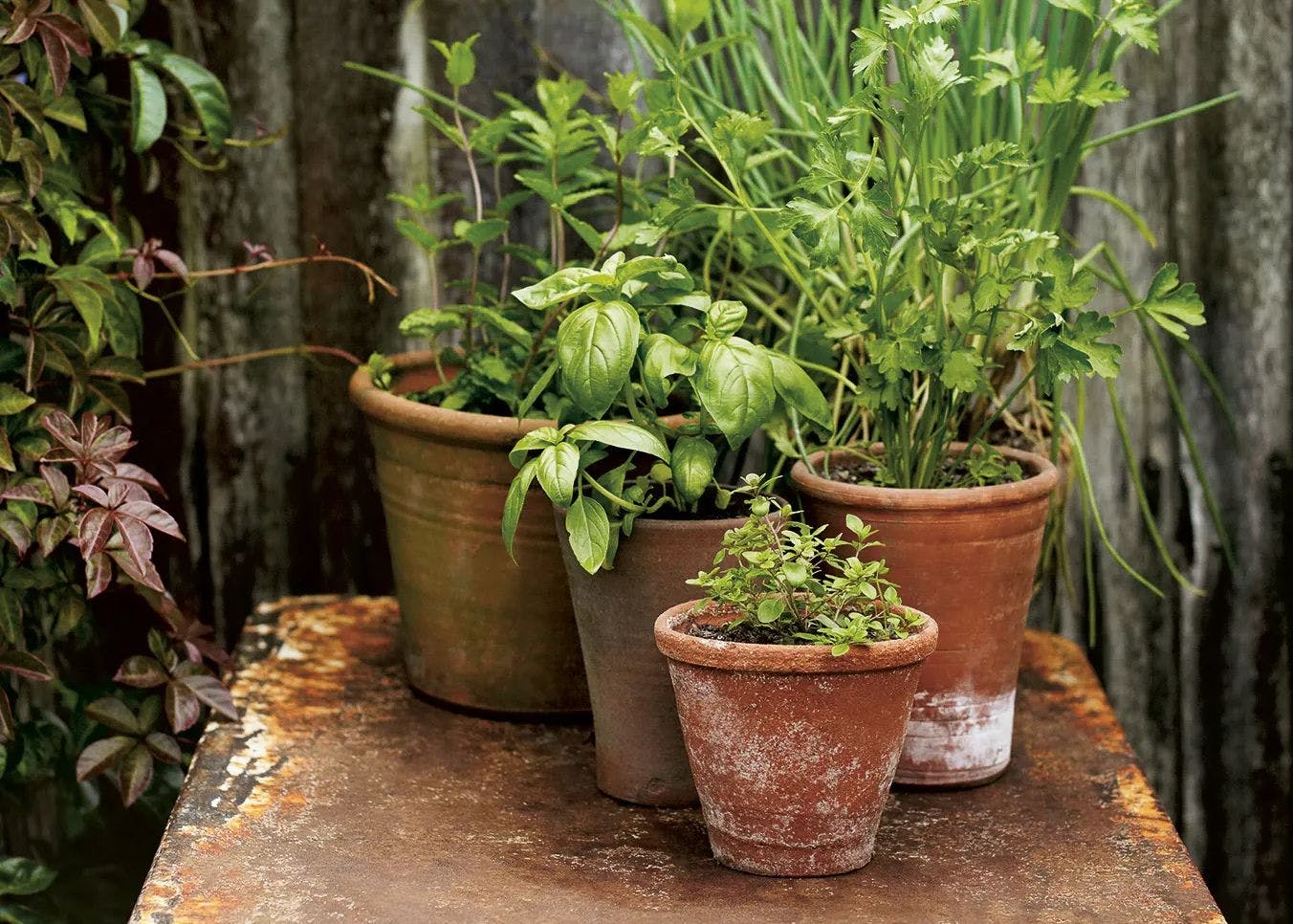
a table for two?
A bistro-style table (reminding us of croissant stops in Paris) makes for versatile seating and an alfresco dining situation. The chairs can be moved around and even folded away whilst you use the table for potting your plants.
water feature
A water feature in a small garden adds movement, calming sounds and visiting wildlife and birds. When we say water feature, this could be anything from a trickling fountain to a waterfall wall installation. Look for wide shallow pots and seal drainage holes or old zinc planters; either way, ensure there is a way for wildlife to climb out.
re-wild
A sure way to make your space feel like an urban jungle is to bring wildlife. Wildlife needs food, water and shelter to flourish. Opt for hedges over fences if you can, add bird feeders, and bug hotels and leave seed heads and fading stems - providing food and shelter.
fill with fragrance
Scented plants have a knack for transporting us to some relaxing escape, made even more intense in a small garden. Plan your seasonal scents to bring fresh fragrances with the passing seasons' Place pots near the door, and herbs on the table and use cracks in the patio; so that they occasionally are stepped on and release their fragrance in calming wafts.
neat seats
Challenge yourself with the multi-use seating, or integrate the seats with the architecture of the space to utilise every nook. If you are a keen composter, you may want to store your bin under a bench.
mirror appeal
The age-old feng-shui trick; mirrors can make a small space bigger whilst also reflecting light and highlighting points of interest. Hide the edges with climbing plants or choose a tarnished finish to soften the reflection.
embrace shade
City living often means our green spaces get overshadowed by buildings. Many plants struggle with lower light levels, so get to grips with your shade level and choose plants that work. Ferns, foxgloves and forget-me-nots are great options. Add extra nutrients into the soil to support their growth.
creative crevices
The tiniest nook can be an opportunity for planting opportunities. Try planting in gaps in paving with compact plants like thyme or chamomile. Wall cracks can hold a fern in the shade and even add hardy succulents to a base of a wall.
raised garden beds
A backdrop of blooms is ideal for any sized garden. The best way to achieve this in a small garden is to use a raised bed; on one boundary wall. Place your bistro table next to it for dinners amongst the flowers. Break it upSay you have a long and thin garden; adding a central bed can bring character and point of interest. Planters of small clipped lavender bushes also can help zone the garden from dining to relaxing or try using different paving.